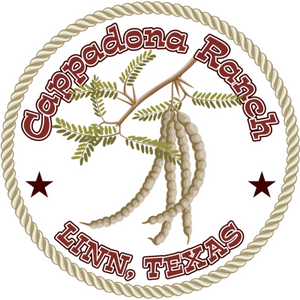You may have sat around the pit on a gorgeous Saturday evening, barbecuing some delicious meat over some smoky mesquite wood. You might have even been using one of our tantalizing Cappadona Ranch Jellies to glaze your grub.
What you might not have realized though is that Prosopis glandulosa, otherwise known as mesquite, has an amazing history that stretches centuries and is one of the natural resources of Texas that has helped civilization to carry forward.
Flourishing throughout the American Southwest, especially in Texas where it covers at least one-third of the land area, mesquite was a major resource for desert living Native Americans. The Apache, Cahuilla, Maricopa, Yuma, Yavapai, Mohave, Hualapai, and Hope tribes are derived a number of uses from honey mesquite—one of the seven varieties of mesquite that grows. The Pima Indians even identified the mesquite tree as the “Tree of Life” because of it’s ability to offer life-giving sustenance in an environmentally harsh area of the United States.
Despite it’s lackluster appearance, the honey mesquite proved itself to be a vital resource that provided the native people with food, shelter, tools, weapons, medicine, trade items, and a gamut of other benefits. As was often often exercised by the Native Americans, the Southwestern Indians intelligently used all parts of the tree including the beans, bean pods, leaves, roots, trunk, limbs, bark, and gum in a number of ways, such as:
- Food—Because of its reliability, even during years of drought, the mesquite bean was a valuable commodity that was eaten or even mixed with water to produce a refreshing drink. The straw-colored pod that the honey-mesquite produces has a high nutritional value and was pounded into a meal that in turn was used to make small sun-dried cakes. High in protein, and with a decent amount of fiber, it is said that mesquite flour foods are able to stabilize hunger for hours on end.
- Beverages—As previously mentioned, the natives of Southwestern United States used grounded mesquite beans and water in a drink known as atole. The drink could also be fermented to produce a mildly intoxicating concoction.
- Shelter—Trunks and limbs from the mesquite tree was used to make shelter, construct homes and roofs, and also used for fencing.
- Medicine—With a long history of medicinal uses, Southwestern tribes weren’t the only people to use mesquite. Aztecs made a lotion from mesquite leaves and water as an eyewash for treating infection and irritation. Comanches chewed on the leaves to ease toothaches and it is also known to have been used for sores, burns, chapped skin, and sunburns. Gum from the mesquite bark was particularly useful for treating upset stomach, food poisoning, and aiding in digestion. The sap could also help with wounds, sore throats, and even hemorrhoids. The Yaquis tribe would treat headaches with a mixture of leave pulp and water and then bind the mixture to their forehead. Mesquite was even used for lice, cough, laryngitis, pink eye, and a variety of other ailments. It’s safe to say that the mesquite is definitely a miracle tree.
- Fuel—A reliable source in what could otherwise be labeled as a barren land, the roots were used by both natives and historic cowboys as fuel for kindling, and sweat house fires.
- Clothing—Women’s skirts and baby diapers were developed from pounding bark into flat sheets of fiber for clothing.
- Dye and Glue—The gum that oozes from mesquite bark was used as a type of glue to mend pottery, and was used by both men and women as both simultaneously a hair dye and medicine to kill lice.
- Tools—Southwestern natives used mesquite wood in a number of tools to help them survive the harsh conditions in Texas and the Mojave desert. The wood and its fiber were turned into harpoons, cords, bowstring, nets to carry pottery, cradles, and agricultural tools. The gum was used to help in gluing together arrow points, waterproofing basket-jars, and the leaves were even used to help whiten clothes.
- Gametime—Mesquite wasn’t only used strictly as a survival tool, it was also turned into recreational equipment for footrace games and a mesquite ball game similar to field hockey.
The use of the mesquite didn’t end with Native Americans. Early settlers in Texas used mesquite wood for trees because of its sturdiness and abundance, ranchers used mesquite logs for corrals, railroad crews used the mesquite as boiler fuel, and hubs, spokes, and ribs for small boats were all developed from mesquite. Interestingly, when coffee was in short supply during the Civil War, the use of mesquite beans for coffee and tea once again became a norm.
Cappadona Ranch is continuing these century-long traditions by developing delicious jellies, teas, and coffees that can’t be found anywhere else. If you’re ready to spice up your daily meals, try one of our products and find out exactly why mesquite is known as the “Tree of Life.”





